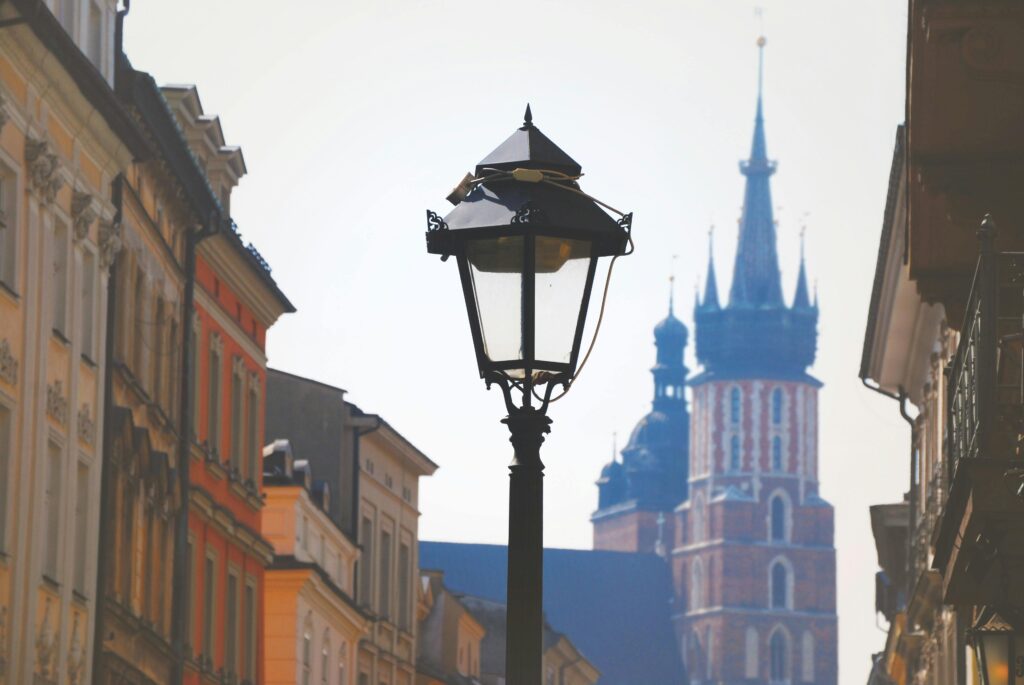Welcome to the A-Z of Featured Green Travel Destinations – with tips on where to visit, stay, what to experience and how to travel sustainably.
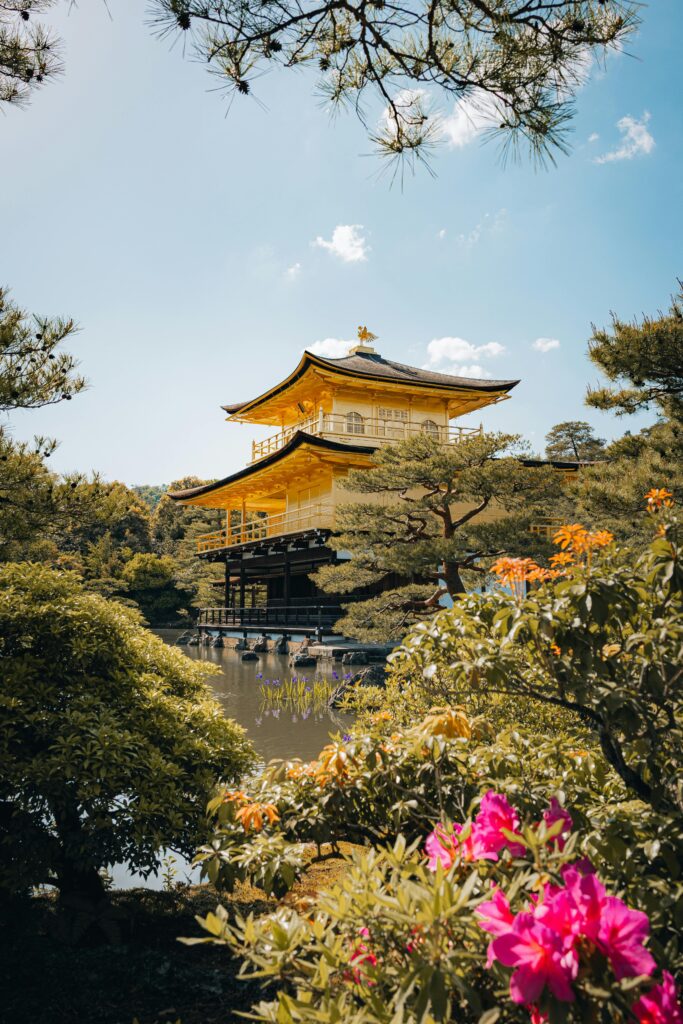
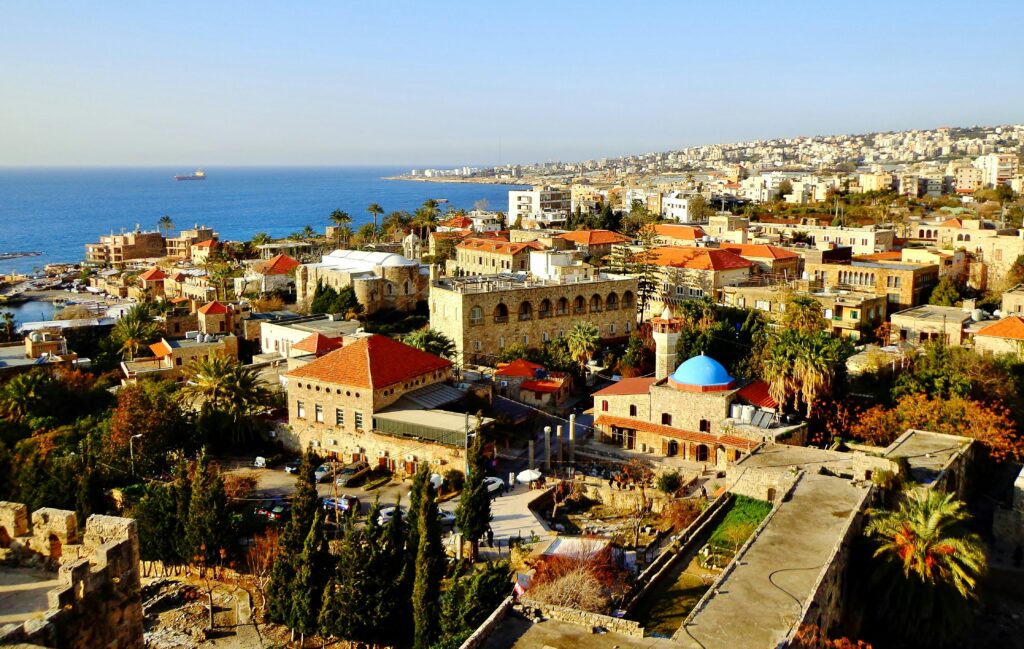
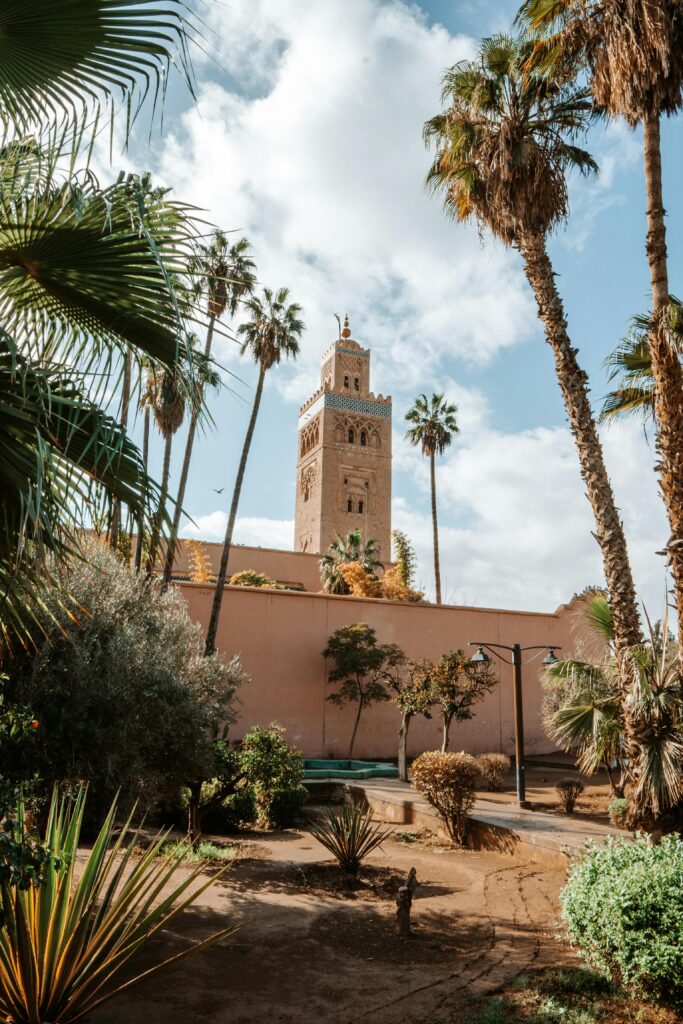

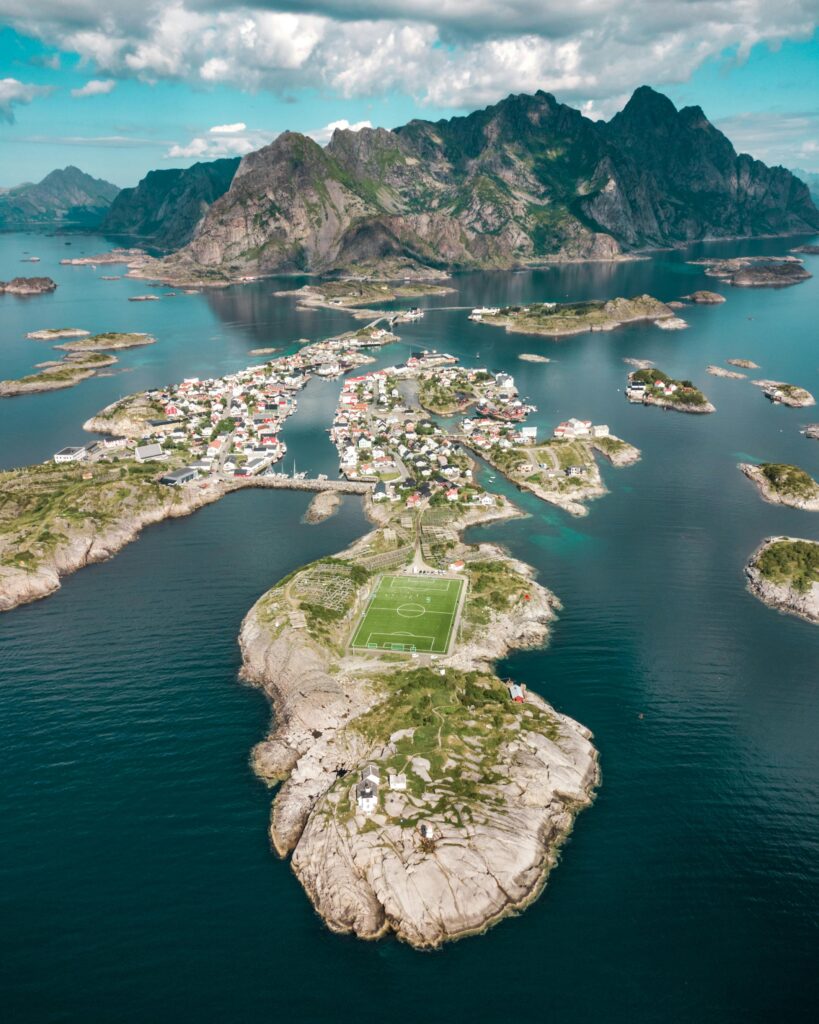

K: Kyoto, Japan
Green Travel Guide to Kyoto

Kyoto, Japan’s ancient capital, is an exquisite city known for its timeless beauty, cultural heritage, and natural landscapes. Renowned for its historic temples, traditional tea houses, and picturesque gardens, Kyoto also stands as a model for eco-tourism and sustainable travel. The city promotes environmental conservation, energy-efficient practices, and community-based tourism.
This Green Travel Destination Guide to Kyoto provides eco-conscious travellers with sustainable ways to explore the cultural heart of Japan while helping protect its natural environment.
Getting to Kyoto: Sustainable Travel Options
By Plane:
Kyoto is easily accessible from Osaka via Kansai International Airport (KIX), about 1.5 hours away by train. While flights contribute to carbon emissions, Kyoto and its surrounding areas offer ways to reduce environmental impact through green initiatives, such as carbon offset programs. To minimise your carbon footprint, consider booking direct flights and participate in carbon offset programs.
By Train:
One of the most eco-friendly travel options in Japan is the shinkansen (bullet train). The Tōkaidō Shinkansen offers efficient and environmentally friendly service between Tokyo and Kyoto, using significantly less energy per passenger than other forms of transport like cars or planes. The shinkansen’s energy-efficient design makes it a sustainable choice for travel.
By Bus:
For a more budget-friendly and low-emission travel option, consider taking long-distance buses to Kyoto from other cities. Many of these buses now use energy-efficient technologies to reduce their environmental impact.
Sustainable Transportation in Kyoto
Once you arrive in Kyoto, there are various sustainable transportation options to help you explore the city and its surroundings with minimal environmental impact.
Public Transportation:
Kyoto has an extensive public transportation system, including buses and trams that are well-connected to major tourist attractions. The Kyoto City Bus system and Keihan Railway are both affordable and environmentally friendly options for getting around the city. Kyoto has also introduced eco-friendly electric buses that run on renewable energy, reducing emissions and providing a cleaner way to explore.
Cycling:
Kyoto is a bike-friendly city with many bike rental services available to tourists. Renting a bike is an excellent way to explore the city’s historic sites, temples, and gardens in an eco-friendly manner. Cycling through Gion or along the Kamo River provides a sustainable and intimate experience, allowing you to enjoy Kyoto’s beauty without contributing to air pollution.
Electric Bicycles:
For a more energy-efficient option, consider renting an electric bicycle. Many bike rental shops in Kyoto now offer electric bikes, which make it easier to explore the city’s hilly areas and more remote locations without emitting carbon.
Walking:
Kyoto is a compact city, and many of its major attractions, such as Kiyomizu-dera Temple and Fushimi Inari Shrine, are within walking distance of each other. Walking is a great eco-friendly way to explore the city’s many historic and cultural landmarks at a leisurely pace.
Sustainable Accommodations in Kyoto
Kyoto offers a variety of eco-friendly accommodations that are dedicated to preserving the city’s environment and supporting local sustainability initiatives.
1. The Kyoto Hotel Okura
This luxury hotel has committed to sustainability by implementing energy-saving technologies, such as LED lighting and water-efficient fixtures. The hotel also encourages guests to use eco-friendly toiletries and supports local, sustainable food sources in its restaurant.
2. Hotel Granvia Kyoto
Located in Kyoto Station, Hotel Granvia Kyoto has been recognized for its commitment to energy conservation and waste reduction. The hotel employs green cleaning practices, uses energy-efficient appliances, and supports sustainable farming by sourcing produce from local organic farms.
3. Shiraume Inn
For a more traditional stay, consider Shiraume Inn, a historic ryokan (Japanese inn) that blends sustainability with heritage. Located near the Kamo River, Shiraume uses natural building materials, recycles waste, and offers eco-conscious amenities to its guests.
4. Guest House An
A small guest house in Kyoto, Guest House An emphasizes sustainability through minimal waste, the use of natural cleaning products, and efforts to promote local and seasonal foods. The guest house also promotes responsible tourism by encouraging guests to respect local customs and environmental practices.
Sustainable Activities and Attractions in Kyoto
Kyoto offers a wide range of eco-friendly activities that allow visitors to immerse themselves in the city’s history, culture, and natural beauty while minimising their impact on the environment.
1. Visit the Kiyomizu-dera Temple
The Kiyomizu-dera Temple, a UNESCO World Heritage Site, is one of Kyoto’s most iconic attractions. The temple has implemented eco-friendly measures, such as water conservation and energy-efficient lighting, to ensure that tourism does not harm the local environment. Visitors can enjoy panoramic views of Kyoto’s ancient cityscape while respecting the sacredness of the site.
Eco-tip: Stick to designated pathways, and avoid disturbing the temple grounds. Respect cultural practices and minimise waste.
2. Explore the Arashiyama Bamboo Grove
The Arashiyama Bamboo Grove is one of Kyoto’s most beautiful natural spots, where towering bamboo stalks create an ethereal atmosphere. It’s also an important ecological area, so make sure to stay on marked trails and avoid disturbing the delicate flora and fauna.
Eco-tip: Bring a reusable water bottle and avoid single-use plastic to help protect this pristine environment.
3. Take a Walk Along the Philosopher’s Path
The Philosopher’s Path, a scenic walk along the Kamo River, offers a peaceful way to explore Kyoto’s traditional temples, shrines, and natural beauty. The walk is lined with cherry trees, making it a popular spot during the spring bloom.
Eco-tip: Keep to the designated paths, carry reusable items, and respect the natural beauty of the area by avoiding litter.
4. Visit the Fushimi Inari Shrine
The Fushimi Inari Shrine, famous for its endless rows of red torii gates, is an important cultural and spiritual site in Kyoto. The shrine and its surroundings are part of a national park, and the region is committed to conservation and sustainable tourism.
Eco-tip: Support sustainable tourism by visiting the shrine during off-peak hours to reduce overcrowding and minimise the environmental impact.
5. Participate in a Traditional Tea Ceremony
Kyoto is the heart of Japan’s tea culture, and participating in a traditional Japanese tea ceremony is an eco-friendly way to connect with the local culture. Many tea houses in Kyoto use organic tea grown without pesticides, and the ceremony itself is a meditative practice that encourages mindfulness and appreciation of the earth’s resources.
Eco-tip: Choose tea houses that prioritise sustainable practices and local sourcing for a truly eco-conscious experience.
Sustainable Dining and Shopping
Kyoto is known for its local, seasonal cuisine, and many restaurants and markets in the city are committed to sustainability and local sourcing.
1. Traditional Kyoto Cuisine
Kyoto’s culinary scene is rooted in seasonality and local ingredients. Look for restaurants that serve shojin ryori (Buddhist temple cuisine), which focuses on plant-based dishes made with organic and locally sourced ingredients. Many of Kyoto’s restaurants also focus on zero-waste practices, using every part of the ingredients and minimizing food waste.
2. Nishiki Market
Nishiki Market, located in the heart of Kyoto, is known as the “Kitchen of Kyoto.” The market offers a wide range of local, fresh, and organic products, from vegetables to handmade crafts. Supporting local farmers and artisans in the market helps reduce carbon emissions related to food transportation.
3. Kyoto Handicrafts
Kyoto has a long tradition of artisanal crafts, and many shops sell eco-friendly products made from sustainable materials. Whether you’re looking for kimono, handmade paper, or wooden crafts, buying locally made products helps reduce environmental impacts while supporting traditional craftspeople.
Green Travel Tips for Kyoto
- Minimise Waste: Kyoto is very eco-conscious, so be sure to carry a reusable water bottle, shopping bag, and utensils to reduce plastic waste.
- Respect Nature and Heritage: Stick to designated paths and respect local cultural practices, especially when visiting sacred sites and natural areas.
- Support Local and Sustainable Businesses: Choose restaurants, accommodations, and shops that prioritise sustainability and community engagement.
- Use Public Transport: Kyoto’s public transportation system is both efficient and environmentally friendly, so make use of buses and trains to reduce your carbon footprint.
- Offset Your Carbon Emissions: If flying, consider offsetting your travel emissions to help reduce your overall environmental impact.
Kyoto as a Green Destination
Kyoto, with its deep cultural history and stunning natural beauty, provides an exemplary model for sustainable tourism. By prioritising eco-friendly transportation, responsible tourism practices, and local sustainability initiatives, travellers can enjoy Kyoto’s rich offerings while preserving its unique cultural and natural heritage. Embrace the principles of green travel to ensure that Kyoto remains a sustainable destination for the future.

L: Lebanon
Green Travel Guide to Lebanon
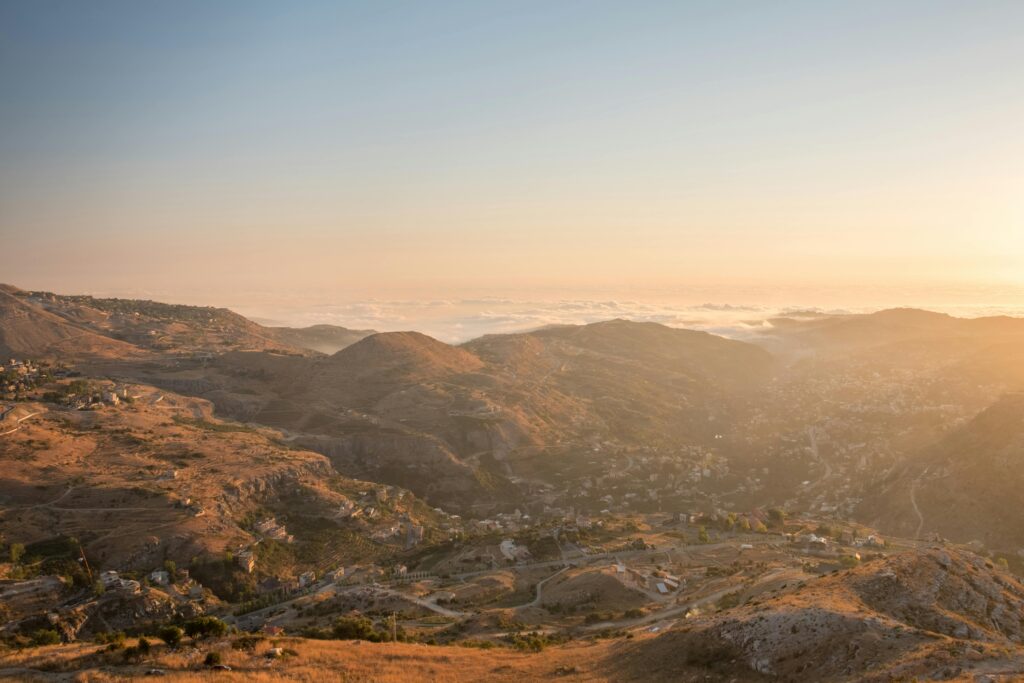
Lebanon, a land of rich history, vibrant culture, and breathtaking natural landscapes, is an under the radar location in the Middle East for eco-tourism. Often affected by neighbouring conflicts, Lebanon does not immediately spring to mind as a go-to green destination. However, this beautiful and welcoming country has much to offer the intrepid traveller. From its ancient ruins and medieval towns to its mountains, beaches, and forests, Lebanon offers a diverse range of experiences for eco-conscious travellers. The country has made great strides in promoting sustainable tourism, environmental conservation, and local community initiatives.
This Green Travel Destination Guide to Lebanon will help you plan a responsible and sustainable visit while exploring Lebanon’s natural and cultural wonders.
Getting to Lebanon: Sustainable Travel Options
Tip: Check travel advisories in advance.
By Plane:
The main gateway to Lebanon is Beirut Rafic Hariri International Airport (BEY). While flights inevitably contribute to carbon emissions, travellers can reduce their environmental impact by booking direct flights and participating in carbon offset programs offered by airlines. Additionally, you can choose flights from airlines that have committed to reducing their carbon footprint and adopting more sustainable practices.
By Train:
Lebanon’s rail network was once extensive, but it has largely fallen out of use in recent decades. However, there are plans to revive train services, with initiatives aimed at reducing traffic congestion and providing an eco-friendly transport option. In the future, train travel may once again offer a greener alternative to road transport.
By Car:
While Lebanon’s road infrastructure is well-developed, driving can be an environmental concern due to high traffic volumes and fuel consumption. To minimise your carbon footprint, consider using carpooling services or opting for electric vehicle rentals (if available). Additionally, sustainable car rental services can offer hybrid or low-emission vehicles for eco-conscious travellers. Don’t even think about driving in Beirut – this is best done by an experienced local driver!
Sustainable Transportation in Lebanon
Once in Lebanon, there are several eco-friendly transportation options that allow you to explore the country with minimal environmental impact.
Public Transportation:
Public transport in Lebanon is somewhat limited, but major cities like Beirut and Tripoli have local buses that provide a cost-effective and eco-friendly way to get around. The Lebanese government is working toward improving and modernising public transport infrastructure, with a focus on reducing emissions and expanding eco-friendly options.
Cycling:
Lebanon is slowly becoming more bike-friendly, with bike lanes and rental services emerging in cities like Beirut. If you’re visiting the coast or exploring Lebanon’s rural areas, cycling is an excellent and sustainable way to experience the beauty of the land. There are even cycling tours available in the countryside, offering a low-carbon alternative to traditional sightseeing.
Electric Scooters and Bikes:
Some cities in Lebanon, particularly Beirut, have introduced electric scooter rentals as part of efforts to reduce pollution. These electric scooters offer a fun, easy, and eco-friendly way to navigate urban areas without the environmental impact of cars.
Shared Ride Services:
Using ride-sharing apps such as Uber and Bolt can reduce the number of individual vehicles on the road. Many of these services are introducing eco-friendly options like electric cars or hybrid vehicles to further reduce their carbon footprint.
Sustainable Accommodations in Lebanon
Lebanon has a growing number of eco-friendly accommodations that prioritise sustainability, conservation, and local community engagement. Here are a few options for eco-conscious travellers:
1. La Maison de la Forêt, Chouf
Nestled in the mountains of Chouf, La Maison de la Forêt is an eco-lodge that emphasises sustainability through the use of solar energy, water conservation practices, and locally sourced materials in its construction. Guests can enjoy hiking, birdwatching, and exploring the surrounding natural beauty while staying in comfortable, eco-conscious accommodations.
2. The White House Hotel, Jbeil
Located in Byblos, one of the oldest continuously inhabited cities in the world, The White House Hotel embraces eco-friendly practices by using solar panels, energy-efficient lighting, and recycled materials. The hotel also promotes sustainable tourism by supporting local agriculture and providing guests with information on eco-conscious activities in the area.
3. Mzaar InterContinental Resort, Kfardebian
This mountain resort in Mzaar Kfardebian focuses on reducing its environmental impact through initiatives like energy conservation, waste management, and water-saving technologies. Guests can enjoy skiing in winter or hiking in summer while knowing that the resort is committed to preserving the surrounding mountain ecosystems.
4. Beit Al Batroun
A small, sustainable guesthouse in Batroun, Beit Al Batroun operates using solar power, provides organic food, and encourages guests to reduce waste. The guesthouse’s charming location and eco-conscious approach make it an excellent choice for those looking to immerse themselves in the local culture while supporting sustainable practices.
Sustainable Activities and Attractions in Lebanon
Lebanon boasts an array of natural wonders and cultural landmarks that can be explored with sustainability in mind. Here are some eco-friendly activities that allow visitors to enjoy the country’s beauty while minimising their environmental impact:
1. Hiking in the Chouf Cedars Forest Reserve
The Chouf Cedars Forest Reserve is one of Lebanon’s most famous natural sites, home to ancient cedar trees, some of which are over 1,000 years old. The reserve has been protected for its ecological significance, and visitors are encouraged to hike through its trails, respecting its natural beauty and wildlife.
Eco-tip: Stick to designated trails, carry reusable water bottles, and avoid leaving waste behind.
2. Visit Jeita Grotto
A UNESCO World Heritage Site, the Jeita Grotto is a spectacular natural limestone cave system located near Beirut. The caves are home to stunning rock formations and underground lakes. Efforts to protect the grotto include strict regulations to limit visitor impact on the delicate ecosystem.
Eco-tip: Follow all guidelines and avoid touching the delicate formations to help preserve the grotto’s natural beauty.
3. Explore the Qadisha Valley
The Qadisha Valley, also known as the Holy Valley, is a UNESCO-listed site in northern Lebanon known for its stunning natural beauty and historical monasteries. It’s a great destination for eco-friendly activities such as hiking, birdwatching, and nature walks. The valley is also home to a rich cultural heritage, with monasteries dating back to the 5th century.
Eco-tip: Support sustainable tourism by hiring local guides and respecting the cultural sites and local communities.
4. Visit the Batroun Beaches and Coastal Areas
Batroun’s pristine beaches are known for their natural beauty and unspoiled environment. Visitors can enjoy activities like swimming, snorkeling, and kayaking in the crystal-clear Mediterranean waters. Many beaches have introduced eco-friendly practices to preserve the environment, such as waste disposal systems and water-saving initiatives.
Eco-tip: Bring your own reusable beach accessories and avoid littering to keep the beaches clean.
5. Wine Tasting in the Bekaa Valley
Lebanon’s Bekaa Valley is famous for its vineyards and wineries, which produce some of the best wines in the region. Many wineries in the area now prioritise sustainable farming practices, including organic viticulture and water conservation techniques.
Eco-tip: Choose wineries that use organic farming practices and support sustainable viticulture.
Sustainable Dining and Shopping
Lebanese cuisine is deeply rooted in seasonal and local produce, making it easy for eco-conscious travellers to enjoy sustainable food options.
1. Local Markets
Lebanon’s farmers’ markets are a great way to experience the country’s fresh, organic produce while supporting local agriculture. Look for markets in cities like Beirut, Tripoli, and Jbeil to buy fresh, organic fruits, vegetables, and artisanal products.
2. Eco-Conscious Restaurants
Many restaurants in Lebanon focus on using local, organic ingredients, especially in vegetarian and vegan dishes. Look for restaurants that support sustainable farming practices and source their ingredients from local farms.
M
3. Souks and Artisan Shops
Support Lebanon’s artisans by purchasing handmade goods such as pottery, textiles, and jewellery made from locally sourced materials. Many of the country’s artisan shops focus on sustainable production and fair trade practices.
Green Travel Tips for Lebanon
- Reduce Plastic Use: Bring a reusable water bottle, shopping bags, and utensils to minimise plastic waste while traveling in Lebanon.
- Support Local Businesses: Choose accommodations, restaurants, and shops that prioritise sustainability and support local communities.
- Respect Local Customs: Always respect local customs and practices, especially when visiting cultural and religious sites.
- Opt for Public Transport: Use public transport or rent an electric vehicle to reduce your carbon footprint while traveling around Lebanon.
- Offset Your Carbon Emissions: Consider offsetting the carbon emissions from your flight through a certified offset program.
Lebanon as a Green Destination
Lebanon offers eco-conscious travellers a unique opportunity to experience rich history, diverse landscapes, and vibrant cultures while supporting sustainable tourism practices. By choosing eco-friendly accommodations, participating in sustainable activities, and supporting local communities, visitors can help preserve the beauty and heritage of Lebanon for future generations. The country’s commitment to environmental conservation, coupled with its warm hospitality, makes Lebanon an ideal destination for green travel enthusiasts.

M: Marrakech, Morocco
Green Travel Guide to Marrakech
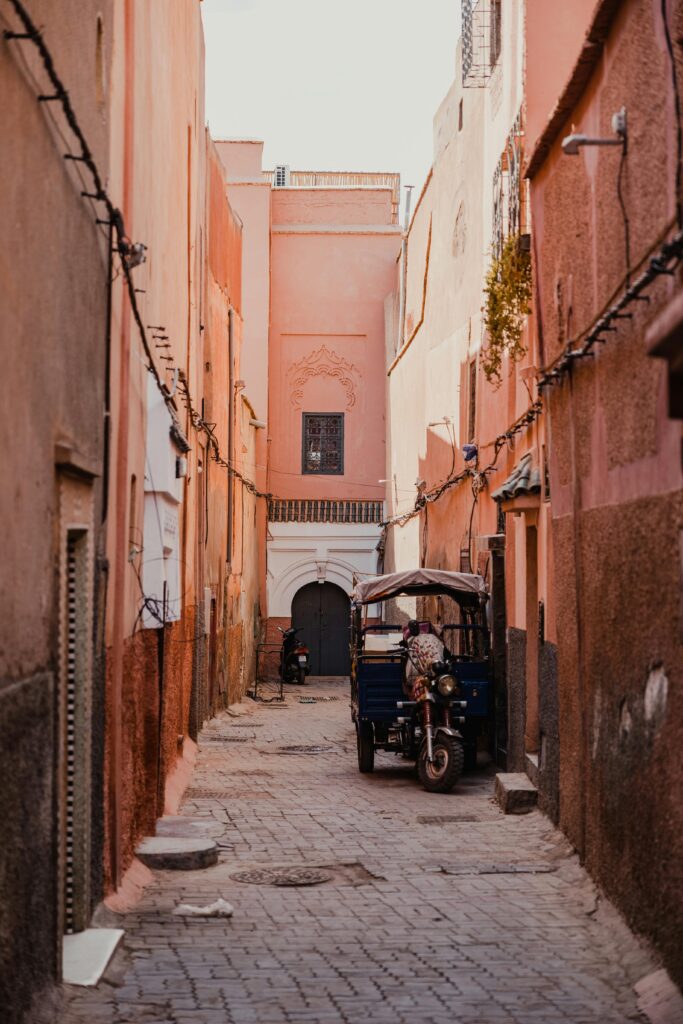
Marrakech, one of Morocco’s most iconic cities, is a vibrant fusion of culture, history, and stunning natural beauty. Known for its bustling souks, ancient palaces, and the magical desert landscapes nearby, Marrakech also offers an increasing number of sustainable travel experiences. The city is embracing eco-tourism initiatives and promoting green practices to balance tourism with conservation efforts.
This Green Travel Destination Guide to Marrakech provides eco-conscious travellers with the tools to explore the city responsibly while contributing to the preservation of its unique heritage.
Getting to Marrakech: Sustainable Travel Options
By Plane:
Marrakech is served by Marrakech Menara Airport (RAK), the main international gateway to the city. While flying contributes to carbon emissions, you can minimise your environmental impact by opting for direct flights and carbon offset programs. Many airlines now offer the option to offset your flight’s carbon emissions, which can make your travel more sustainable.
By Train:
From Casablanca or Rabat, you can take the ONCF (National Railways of Morocco), which provides an efficient and low-emission alternative to flying or driving. Trains are a sustainable way to travel across Morocco and allow you to enjoy scenic views of the Moroccan countryside without harming the environment.
By Bus:
Bus travel is an affordable and sustainable option within Morocco, and several companies offer comfortable buses between major cities. Some buses use more eco-friendly technologies, such as energy-efficient engines.
By Car:
If you choose to rent a car, consider opting for hybrid or electric vehicles, which are becoming more available in Morocco. Car rental services that focus on eco-friendly options can help reduce your carbon footprint while you explore the region.
Sustainable Transportation in Marrakech
Once in Marrakech, there are several sustainable transportation options to explore the city and its surroundings with minimal environmental impact.
Public Transportation:
Marrakech has a network of local buses and taxis that serve tourists and residents alike. The city is working on reducing air pollution and enhancing public transport options to make them more environmentally friendly. Opting for buses rather than taxis or private cars is a more eco-friendly choice for short distances.
Cycling:
Marrakech is becoming more bike-friendly with initiatives to provide more cycling lanes. You can rent bikes or electric bikes for a sustainable way to explore the city. Cycling through the Palmeraie, the city’s vast palm oasis, or around the Majorelle Garden offers a relaxed, eco-conscious way to see Marrakech.
Electric Rickshaws:
The city has introduced electric rickshaws in some tourist areas. These small, eco-friendly vehicles provide an easy and carbon-efficient way to explore the city’s narrow streets, especially in places like the Medina.
Walking:
Marrakech is a compact city, and many of its historic sites, souks, and attractions are within walking distance of each other. Walking through the Medina allows you to experience the city’s atmosphere while minimising your environmental impact.
Sustainable Accommodations in Marrakech
Marrakech has a growing selection of eco-friendly accommodations that focus on sustainability, from luxury hotels to charming guesthouses. These accommodations promote energy conservation, water-saving techniques, and support local communities.
1. Riad El Fenn
A beautiful riad (traditional Moroccan house) in the heart of the Medina, Riad El Fenn focuses on sustainability by using solar energy to heat water, reducing its carbon footprint. The riad also uses eco-friendly cleaning products, water-saving fixtures, and sources organic and local produce for its restaurant.
2. Fairmont Royal Palm Marrakech
This luxurious resort combines traditional Moroccan hospitality with a commitment to sustainability. Fairmont Royal Palm Marrakech is focused on energy efficiency, waste management, and preserving natural resources. It also works with local artisans and farmers to support the surrounding communities.
3. Terre des Etoiles
Located just outside of Marrakech in the Agafay Desert, Terre des Etoiles offers eco-lodges made from sustainable materials. The property uses solar energy and has a strong commitment to waste reduction, with recycling programs and water-saving initiatives.
4. The Red Hotel Marrakech
The Red Hotel Marrakech is an eco-conscious hotel offering energy-efficient rooms, local sourcing for food, and a strong emphasis on waste reduction. It has partnered with local environmental organisations to enhance the area’s sustainability.
Sustainable Activities and Attractions in Marrakech
Marrakech is home to several eco-friendly activities and attractions that allow visitors to explore its rich cultural heritage while supporting sustainable tourism practices.
1. Visit Jardin Majorelle
The Majorelle Garden is one of Marrakech’s most iconic attractions, designed by the French painter Jacques Majorelle. The garden is a haven for biodiversity and sustainable landscaping practices. It is owned by the Yves Saint Laurent Foundation, which has worked to preserve the garden’s unique flora and architecture.
Eco-tip: Stick to the marked paths, avoid disturbing the garden’s plants, and support the foundation’s environmental efforts by purchasing eco-friendly products at the garden shop.
2. Explore the Palmeraie
The Palmeraie is an expansive palm grove just outside Marrakech. It’s an ecological and cultural treasure, providing a unique landscape for visitors. You can explore the area on bike tours or eco-friendly horse-drawn carriages that minimise emissions.
Eco-tip: Take care to avoid disturbing the local wildlife and support eco-conscious tour providers that prioritise conservation.
3. Visit the Menara Gardens
The Menara Gardens are a UNESCO-listed site known for their beautiful olive groves and the reflective pool that stands in front of the Atlas Mountains. It’s a peaceful location for nature lovers to relax while learning about sustainable farming practices in Morocco.
Eco-tip: Respect the greenery and natural landscapes by not littering and adhering to the site’s conservation rules.
4. Camel Trekking in the Agafay Desert
Just outside of Marrakech, the Agafay Desert offers eco-friendly camel trekking tours. These experiences allow travellers to explore the desert’s stunning landscape while supporting local communities and sustainable desert tourism practices.
Eco-tip: If opting for this experience, choose eco-conscious operators that prioritise animal welfare, minimise waste, and use sustainable equipment for tours.
5. Day Trip to Ourika Valley
The Ourika Valley in the Atlas Mountains is a stunning escape from the city, offering lush greenery, waterfalls, and a glimpse of traditional Berber life. Sustainable eco-tourism initiatives are helping protect the valley’s biodiversity and promote responsible travel practices.
Eco-tip: Respect local traditions, avoid littering, and use eco-friendly products during your visit to minimise your environmental impact.
Sustainable Dining and Shopping
Marrakech is home to many restaurants and shops that prioritise local sourcing, organic ingredients, and sustainable practices.
1. Le Jardin
This charming restaurant in the Medina focuses on organic and local ingredients, with a menu based on fresh, seasonal produce. The restaurant also uses sustainable practices like water-saving techniques and supports local farmers and artisans.
2. Café des Épices
Located in the heart of the Medina, Café des Épices offers delicious Moroccan cuisine made from fresh, organic ingredients. The café is committed to reducing its environmental impact through waste management, recycling, and minimising single-use plastic.
3. Souks of Marrakech
The souks of Marrakech offer a wide range of locally made, handcrafted goods, including textiles, pottery, and leather. Many artisans work with sustainable materials and promote fair trade practices. Buying goods from the souks supports local craftspeople and helps sustain the traditional arts of Morocco.
Eco-tip: Look for handmade, eco-friendly products, and avoid mass-produced items that may be harmful to the environment.
Green Travel Tips for Marrakech
- Minimise Plastic Use: Bring a reusable water bottle, shopping bags, and cutlery to reduce waste during your visit.
- Support Local and Sustainable Businesses: Opt for eco-friendly accommodations, restaurants that serve local produce, and businesses that prioritise fair trade and sustainable sourcing.
- Respect Cultural and Natural Sites: Always respect local traditions, and follow guidelines when visiting historical and natural sites to help preserve their integrity.
- Use Public Transport or Ride-Sharing: Opt for public transport or shared ride services like electric taxis to reduce your carbon footprint while traveling around Marrakech.
- Offset Your Carbon Emissions: Consider offsetting the carbon emissions from your flight by participating in an offset program.
Marrakech as a Green Destination
Marrakech offers an exciting blend of culture, history, and sustainability. By choosing eco-friendly accommodations, supporting local artisans, participating in sustainable activities, and following green travel practices, you can help protect the city’s unique cultural and natural heritage while enjoying a fulfilling and responsible travel experience. Marrakech is not only a city of stunning beauty but also one that is committed to a greener, more sustainable future.
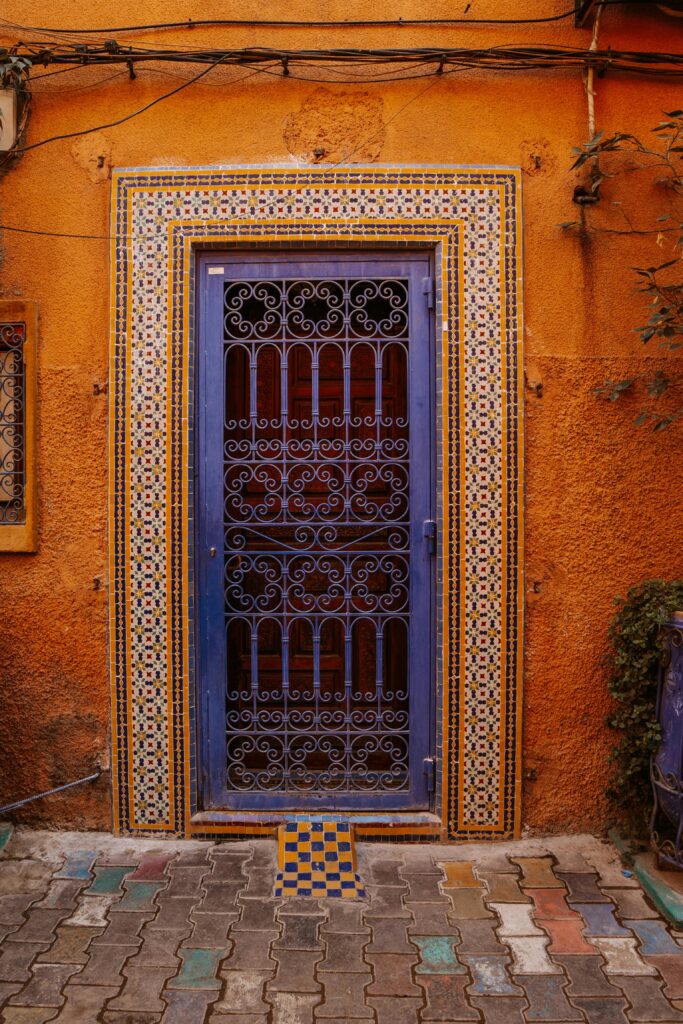
N: Norway
Green Travel Guide to Norway

Norway is one of the world’s most eco-friendly destinations, renowned for its stunning natural landscapes, commitment to sustainability, and strong environmental conservation efforts. From the dramatic fjords and towering mountains to its pristine coastal villages and lively cities, Norway offers visitors an abundance of opportunities to explore the outdoors responsibly.
This Green Travel Destination Guide to Norway will help you discover the beauty of the country while supporting its environmental initiatives and eco-conscious practices.
Getting to Norway: Sustainable Travel Options
By Plane:
Norway’s main international airports are located in Oslo (Gardermoen Airport), Bergen, and Stavanger, among others. While air travel contributes to carbon emissions, you can reduce your impact by opting for direct flights, non-stop routes, and booking flights with airlines offering carbon offset programs. Many airlines are increasingly investing in more fuel-efficient planes, and some even offer options to offset your carbon emissions at the time of booking.
By Train:
Norway’s rail network is one of the most scenic in Europe and is an excellent, eco-friendly alternative to flying. The Vy (Norwegian Railways) offers regular services connecting major cities like Oslo, Bergen, and Stavanger. Train travel is both sustainable and scenic, allowing you to enjoy Norway’s landscapes in a way that minimises your carbon footprint.
By Bus:
Several bus companies in Norway offer long-distance routes and local connections, such as the NOR-WAY Bussekspress. Buses are an affordable and low-emission way to travel between towns and cities. When possible, buses are a more sustainable option than private cars and taxis.
By Car:
If you prefer to drive, you can rent an electric vehicle (EV), as Norway has one of the highest rates of electric car ownership in the world. Many car rental companies now offer electric vehicles to reduce your carbon footprint while exploring the stunning landscapes of Norway. There are also plenty of charging stations throughout the country, making it easy to travel sustainably by car.
Sustainable Transportation in Norway
Norway has invested heavily in making its transportation systems more sustainable and eco-friendly, providing multiple options for travellers to explore the country with minimal environmental impact.
Public Transportation:
Norwegian cities like Oslo, Bergen, and Stavanger have extensive public transportation networks, including buses, trams, and subways. The country’s public transport system is efficient, affordable, and an eco-friendly way to explore the city. Many cities are also introducing electric buses and trams to further reduce emissions.
Electric Boats and Ferries:
Given Norway’s vast coastline and number of fjords, electric boats and ferries are an increasingly popular way to explore its waterways. Norway is pioneering the development of zero-emission ferries, which offer travellers a chance to enjoy the fjords without contributing to air pollution. Fjord Line and Norled operate sustainable ferry services between cities and islands.
Cycling:
Norway’s cities are becoming more bike-friendly, with dedicated cycling paths and bike-sharing programs. Cities like Oslo and Bergen offer bike rentals and are building more bike lanes to make cycling a viable, eco-friendly transport option for visitors. Exploring Norway by bike is a fantastic way to engage with nature while minimising your environmental footprint.
Electric Scooters:
In larger cities, such as Oslo, electric scooter rentals are a common and sustainable form of transportation. These scooters are available through apps and are a quick, fun, and eco-friendly way to travel short distances.
Sustainable Accommodations in Norway
Norway has a wide variety of eco-conscious accommodations that integrate sustainability into their operations, from small guesthouses to luxurious eco-resorts. Here are a few of the top green options:
1. Norefjell Ski & Resort
Located in the Hallingdal region, this eco-resort is dedicated to sustainability, featuring energy-efficient buildings, waste reduction programs, and the use of renewable energy sources. It provides ski-in, ski-out accommodations with stunning views of the Numedal Valley and Norefjell Mountains.
2. The Thief Hotel, Oslo
A luxury hotel located in Oslo, The Thief is known for its eco-friendly initiatives. The hotel uses energy-efficient lighting, offers water-saving amenities, and emphasises sustainable sourcing for its food. The hotel also supports local community projects aimed at environmental preservation.
3. Lofoten Beach Camp
This eco-lodge on the Lofoten Islands is designed with sustainability in mind. The camp uses solar panels, wind energy, and energy-efficient cabins to reduce its environmental impact. Visitors can experience nature in an eco-conscious way, with activities like kayaking, hiking, and wildlife watching.
4. Juvet Landscape Hotel
In the Valldal Valley, near the Geiranger Fjord, Juvet Landscape Hotel offers an unparalleled experience in eco-conscious design. The hotel’s cabins are built using sustainable materials and designed to blend in with the natural landscape. It’s an ideal spot for those looking for a quiet, nature-filled retreat with minimal environmental impact.
Sustainable Activities and Attractions in Norway
Norway offers numerous eco-friendly activities and attractions that allow travellers to immerse themselves in the country’s stunning landscapes while supporting its environmental preservation efforts.
1. Hiking in the Lofoten Islands
The Lofoten Islands are a paradise for outdoor enthusiasts. With dramatic peaks, crystal-clear waters, and pristine beaches, Lofoten is perfect for hiking and wildlife watching. The islands also have a number of eco-conscious tour operators who emphasise sustainability and respect for nature.
Eco-tip: Stick to marked trails, bring reusable water bottles, and avoid disturbing the local wildlife.
2. Exploring the Geiranger Fjord
The Geiranger Fjord, a UNESCO World Heritage Site, is one of the most beautiful fjords in the world. Eco-tourism initiatives have been implemented to preserve the natural environment of the fjord, including the introduction of electric ferries and low-emission boats for sightseeing tours.
Eco-tip: Opt for eco-friendly boat tours to minimise your carbon footprint while exploring this natural wonder.
3. Visit the Northern Lights in Tromsø
Tromsø is one of the best places in the world to see the Northern Lights. The city has committed to sustainable tourism practices, including eco-friendly accommodations, waste management, and carbon offsetting programs. You can join low-impact tours to witness the aurora borealis while minimising your environmental impact.
Eco-tip: Choose operators that focus on sustainability and use electric vehicles or eco-friendly accommodations.
4. Kayaking in the Fjords
Kayaking through the fjords is a peaceful and eco-friendly way to experience Norway’s natural beauty. Several eco-tourism operators provide guided kayaking tours that focus on reducing the environmental impact, such as eco-friendly equipment and wildlife conservation efforts.
5. Arctic Wildlife Watching
Norway’s Arctic regions offer incredible opportunities for wildlife watching, including sightings of whales, seals, and polar bears. Many tour operators in Norway have joined efforts to make wildlife tours more sustainable by following ethical guidelines and promoting the protection of the local wildlife and habitats.
Sustainable Dining and Shopping
Norwegian cuisine has long focused on using seasonal, local ingredients, and many restaurants are committed to offering sustainable dining options.
1. Maaemo (Oslo)
A Michelin-starred restaurant in Oslo, Maaemo is known for its commitment to sustainability and local sourcing. The restaurant only serves organic and locally sourced ingredients, and it strives to create a zero-waste dining experience.
2. Fjord Restaurant (Oslo)
Located in the heart of Oslo, Fjord Restaurant offers sustainable seafood from local Norwegian waters. The restaurant focuses on reducing food waste and supporting ethical fishing practices.
3. Norwegian Farmers’ Markets
Visiting a local farmers’ market is one of the best ways to experience sustainable Norwegian cuisine. Look for markets in cities like Oslo, Bergen, and Trondheim, where you can find fresh, organic produce and artisanal goods made from sustainable ingredients.
4. Eco-conscious Shops
In cities like Oslo and Bergen, you’ll find shops offering sustainable goods, from eco-friendly clothing and locally made crafts to zero-waste products. Many shops support local artisans and promote fair trade practices.
Green Travel Tips for Norway
- Minimise Plastic Use: Bring a reusable water bottle, shopping bags, and cutlery to avoid single-use plastic waste while traveling.
- Use Public Transport: Norway has an excellent public transport system, so avoid driving unless necessary.
- Support Local and Sustainable Businesses: Choose eco-friendly accommodations, restaurants that focus on local and seasonal produce, and tour operators who practice responsible tourism.
- Respect Local Wildlife: Stick to marked trails, do not disturb wildlife, and use eco-friendly products during your trips.
- Offset Your Carbon Emissions: Consider offsetting the carbon emissions from your flight through certified offset programs.
Norway as a Green Destination
Norway stands out as one of the world’s top destinations for eco-conscious travellers. With its breathtaking landscapes, strong commitment to environmental conservation, and growing sustainable tourism initiatives, the country offers a wealth of opportunities for green travel. By choosing eco-friendly transportation, accommodations, and activities, travellers can help preserve Norway’s unique natural beauty and cultural heritage while enjoying an unforgettable experience in one of the world’s most eco-friendly countries.

O: Oman
Green Travel Guide to Oman

Oman, a country renowned for its dramatic deserts, rugged mountains, and stunning coastline, is increasingly embracing eco-tourism and sustainable travel practices. With its focus on preserving its rich cultural heritage and natural landscapes, Oman offers travellers a unique opportunity to explore an enchanting destination while reducing their environmental footprint.
This Green Travel Destination Guide to Oman highlights how you can experience the beauty of the Sultanate in a responsible, eco-conscious way.
Getting to Oman: Sustainable Travel Options
By Plane:
Oman’s main international gateway is Muscat International Airport (MCT), which connects the capital city to major destinations across the world. To reduce your carbon footprint, choose direct flights and support airlines that offer carbon offset programs. Many airlines have also begun adopting fuel-efficient technologies and sustainable practices in their operations, which help reduce emissions.
By Bus:
Oman’s public transportation system is mainly bus-based. Mwasalat, the national bus company, operates an efficient and eco-friendly bus network that connects the capital, Muscat, with other cities like Salalah, Nizwa, and Sur. Opting for the bus is an affordable and low-emission way to travel between cities.
By Car:
If you prefer to rent a car, consider renting an electric vehicle (EV), as Oman is increasing its efforts to make electric cars more available. Though electric vehicle infrastructure is still developing, it’s possible to find EV rental options, particularly in Muscat. For those opting for conventional cars, consider choosing hybrid or fuel-efficient models to reduce your environmental impact.
Sustainable Transportation in Oman
Oman is investing in various eco-friendly transport options to reduce the environmental impact of tourism and daily travel.
Public Transport:
Muscat, the capital city, offers efficient public buses operated by Mwasalat. These buses are a low-emission alternative to taxis and private cars, offering an affordable and eco-friendly way to travel around the city.
Cycling:
Cycling is gaining popularity in Oman’s larger cities, especially in Muscat, where there are now dedicated bike lanes in certain areas. If you’re staying in or around Muscat, renting a bike or using bike-sharing programs (once available) can be a sustainable way to explore the city.
Electric Vehicles:
Oman has begun introducing electric vehicles to its transportation network. Although EVs are still somewhat limited, they are becoming more accessible in major urban areas, and some hotels and tour operators offer electric cars for rent. Using electric cars for sightseeing can significantly reduce your carbon emissions while traveling through Oman’s scenic landscapes.
Walking:
Oman’s natural beauty is best enjoyed on foot, especially in the many national parks, mountains, and coastal areas. Walking tours through Oman’s historic forts, villages, and nature reserves can offer a more sustainable and immersive way to discover the country’s rich culture and natural heritage.
Sustainable Accommodations in Oman
Oman offers a range of eco-friendly accommodations that focus on reducing their environmental footprint through energy-efficient practices, waste reduction, and support for local communities.
1. Al Baleed Resort Salalah by Anantara
Set amidst the UNESCO-listed Al Baleed Archaeological Park, this luxurious resort is committed to sustainability. The resort integrates eco-friendly technologies such as solar power, water recycling, and energy-efficient systems. It also offers organic dining options that promote sustainable agriculture.
2. The Chedi Muscat
An award-winning hotel in Muscat, The Chedi Muscat focuses on sustainability through energy-efficient designs and the use of renewable resources. The hotel employs water-saving systems, uses eco-friendly toiletries, and has a waste reduction policy in place.
3. Desert Nights Camp
Located in the Oman Desert, Desert Nights Camp offers an authentic Bedouin experience with a focus on sustainability. The camp uses solar power, natural materials for building, and focuses on waste management. The camp also promotes responsible travel by offering low-impact desert experiences, such as camel treks and star-gazing.
4. Masirah Island Resort
On the remote Masirah Island, this eco-lodge focuses on protecting the island’s natural environment, especially the sea turtle nesting sites. The resort operates sustainably by using local materials, reducing energy consumption, and prioritising waste reduction.
Sustainable Activities and Attractions in Oman
Oman offers a variety of eco-friendly activities that allow visitors to connect with nature while supporting the country’s environmental conservation efforts.
1. Visit the Wahiba Sands (Sharqiya Sands)
The Wahiba Sands is a vast desert area with beautiful dunes and diverse wildlife. Eco-tourism initiatives in the area emphasise responsible desert tourism that minimises environmental impact. Travellers can enjoy sustainable desert experiences like camel trekking and 4×4 dune safaris with eco-conscious tour operators who focus on conservation and cultural preservation.
Eco-tip: Choose tour operators who emphasise wildlife conservation and leave no trace principles to protect the desert’s fragile ecosystem.
2. Explore the Jebel Akhdar Mountains
The Jebel Akhdar mountain range, often referred to as the “Green Mountains,” is a great destination for eco-tourism. With its terraced farms, abundant fruit orchards, and scenic hiking trails, it offers an opportunity to explore Oman’s natural beauty while promoting sustainable agriculture practices.
Eco-tip: Respect local farmers’ traditions and practice leave-no-trace hiking to protect the environment.
3. Dolphin Watching in Musandam
Musandam, located in Oman’s northernmost region, is famous for its fjords and abundant marine life. Eco-friendly boat tours offer the chance to observe dolphins, whales, and other marine life in their natural habitat. Several operators in the area promote sustainable wildlife watching and emphasise respecting local marine ecosystems.
Eco-tip: Choose boat tours that adhere to ethical wildlife viewing practices and avoid disturbing the animals.
4. Turtle Watching at Ras al Jinz
Ras al Jinz is one of Oman’s most important sea turtle nesting sites. The Ras Al Jinz Turtle Reserve offers eco-friendly tours that allow visitors to observe sea turtles nesting on the beaches. The reserve focuses on protecting these endangered creatures through responsible tourism and research.
Eco-tip: Follow all guidelines to protect the turtles and their nesting sites, such as keeping noise to a minimum and avoiding flash photography.
5. Hiking in the Al Hajar Mountains
The Al Hajar Mountains are perfect for adventurous travellers looking to explore rugged terrain. Sustainable hiking tours in the region focus on minimising environmental impact while providing a chance to experience Oman’s unique biodiversity and stunning landscapes.
Eco-tip: Stick to marked trails, avoid disturbing wildlife, and pack out all waste to keep the mountains pristine.
Sustainable Dining and Shopping
Oman’s cuisine is deeply rooted in local traditions, and the country’s growing focus on sustainability is reflected in its food scene.
1. Bait al Luban (Muscat)
A restaurant known for offering authentic Omani dishes made from locally sourced ingredients, Bait al Luban serves dishes like shuwa (slow-cooked lamb) and majboos (a rice dish with meat and vegetables). The restaurant promotes sustainable food practices by sourcing produce from local farms and offering seasonal menus.
2. The Beach Restaurant (Muscat)
Located by the sea, The Beach Restaurant offers fresh seafood that is sustainably caught and locally sourced. The restaurant supports the local fishing community while minimizing waste through eco-friendly practices like composting and using biodegradable materials.
3. Local Markets (Souks)
The souks in Muscat, Nizwa, and other cities offer an excellent opportunity to purchase sustainable, locally made crafts and food items. Look for artisan goods made with natural, sustainable materials like palm fronds, clay, and wood. Supporting local artisans helps preserve traditional crafts and promotes fair trade practices.
Eco-tip: Bargain wisely, and prioritise locally made, eco-friendly products over mass-produced goods.
Green Travel Tips for Oman
- Minimise Plastic Use: Bring your own reusable water bottle, shopping bags, and cutlery to avoid contributing to plastic waste.
- Use Public Transport: Utilise public buses or shared taxis when possible to reduce your carbon footprint in cities.
- Support Local and Sustainable Businesses: Choose eco-friendly accommodations, restaurants that focus on local ingredients, and businesses that promote sustainability.
- Respect Local Traditions and Nature: Respect local customs, wildlife, and cultural sites, ensuring you leave minimal impact.
- Offset Your Carbon Emissions: Consider offsetting the emissions from your flight through a carbon offset program.
Conclusion: Oman as a Green Destination
Oman is a country that offers travellers the opportunity to immerse themselves in its rich history, diverse landscapes, and natural beauty, all while promoting sustainability and responsible tourism. From eco-friendly accommodations to nature tours and local experiences, Oman’s commitment to preserving its environment is becoming increasingly evident. By choosing sustainable travel options and supporting eco-conscious businesses, you can help protect Oman’s unique ecosystems and contribute to its ongoing efforts to preserve the environment for future generations.
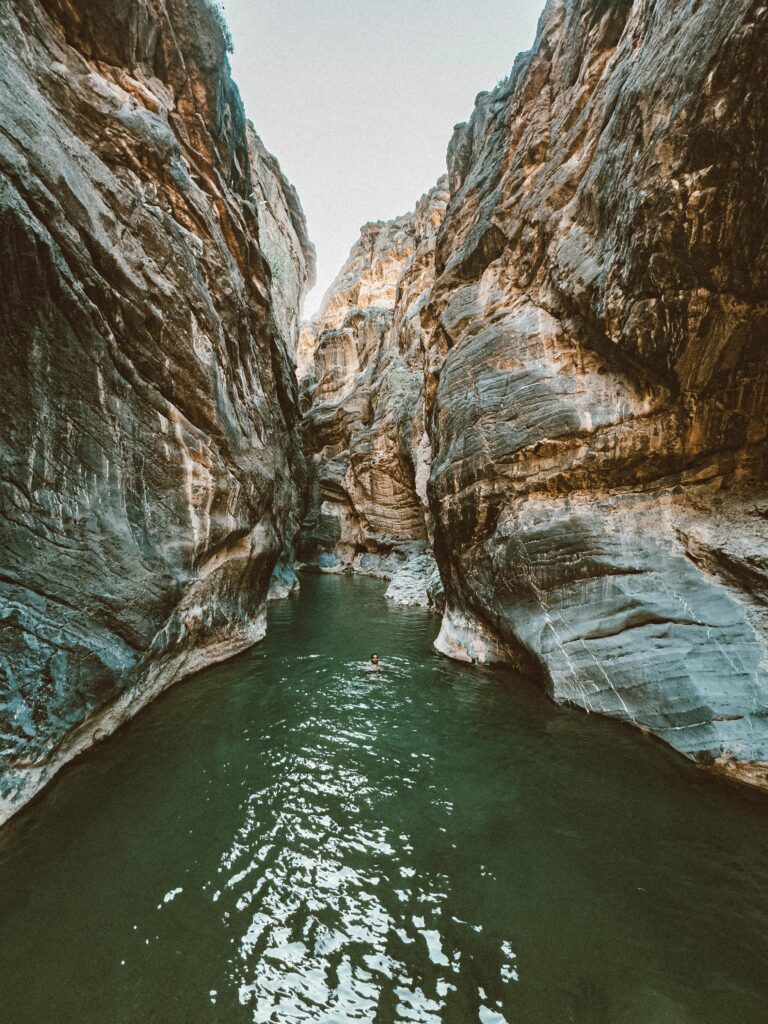
P: Poland
Green Travel Guide to Poland

Poland, a country known for its history, charming cities, and diverse landscapes, is embracing sustainable travel and eco-tourism in recent years. Whether you’re exploring the vibrant cities, hiking through pristine forests, or relaxing by crystal-clear lakes, Poland offers a variety of eco-friendly experiences that allow you to immerse yourself in its natural beauty while reducing your environmental impact.
This Green Travel Destination Guide to Poland will help you discover the best sustainable travel options, eco-friendly accommodations, and activities in this diverse and beautiful country.
Getting to Poland: Sustainable Travel Options
By Plane:
Poland’s main international airports are located in cities like Warsaw, Kraków, Gdańsk, and Wrocław. While air travel can be carbon-intensive, you can reduce your carbon footprint by choosing direct flights, opting for airlines with carbon offset programs, and booking flights on fuel-efficient aircraft.
For the eco-conscious traveler, Poland also has a growing emphasis on sustainable travel practices at its airports, including energy-efficient terminals and a push for carbon-neutral operations at some of its major airports.
By Train:
Poland has a well-developed and sustainable rail network, with PKP Intercity providing fast and eco-friendly services that connect major cities like Warsaw, Kraków, Gdańsk, and Wrocław. Trains are an excellent and low-emission option for traveling within Poland, offering scenic routes through forests, lakes, and historic towns. Opting for train travel reduces your carbon footprint significantly when compared to flying.
By Bus:
Buses are an affordable and sustainable alternative for traveling between cities. Companies like FlixBus and PolskiBus operate eco-conscious services that offer affordable fares and low-emission buses, making it a viable option for budget-conscious, green travellers.
By Car:
If you prefer driving, renting an electric vehicle (EV) is becoming more accessible in Poland’s larger cities. Poland is increasing its network of EV charging stations, so it’s easier to rent an electric car and travel around sustainably. For a more eco-friendly journey, choose a hybrid or fuel-efficient car to minimise emissions.
Sustainable Transportation in Poland
Poland is making strides to reduce its environmental footprint by promoting sustainable transportation options for residents and visitors alike.
Public Transport:
Poland’s major cities are well-connected by public transportation, including trams, buses, and metro systems in cities like Warsaw. These systems are energy-efficient and a great way to explore the city with minimal environmental impact. Many cities are also introducing electric buses to further reduce emissions and promote clean air.
Eco-tip: Use contactless payment cards for public transport, which help reduce paper waste and make traveling more convenient.
Cycling:
Poland is making significant improvements to its cycling infrastructure, with bike-sharing programs in cities like Warsaw, Kraków, and Wrocław. Many cities have developed dedicated bike lanes, making cycling a safe and eco-friendly way to explore urban areas. If you’re staying in a city, consider renting a bike and cycling between attractions to experience Poland’s culture and nature in a sustainable way.
Eco-tip: Rent bikes from local bike shops or use city-wide bike-share programs to reduce the environmental impact of using motorised transport.
Electric Scooters:
In addition to bikes, electric scooters are becoming increasingly popular for short trips in Poland’s cities. Many cities, such as Warsaw and Kraków, have implemented electric scooter rental programs, allowing you to zip around the city in an eco-friendly way.
Walking:
Walking is one of the most sustainable and rewarding ways to explore Poland’s cities and nature. Poland’s historic cities, such as Warsaw and Kraków, are pedestrian-friendly, with many sites accessible on foot. Nature lovers can explore Poland’s forests, lakes, and national parks on foot, enjoying the landscape while reducing their carbon footprint.
Sustainable Accommodations in Poland
Poland offers a variety of eco-conscious accommodations, from eco-friendly hotels to charming rural lodges, all focused on minimising their environmental impact and promoting sustainability.
1. Hotel Stary (Kraków)
Located in the heart of Kraków, Hotel Stary integrates eco-friendly practices into its operations. The hotel focuses on reducing energy consumption, uses sustainable cleaning products, and emphasises waste reduction through recycling programs. Guests can enjoy a luxurious stay with the peace of mind that their accommodation is contributing to environmental preservation.
2. Bison Hill Camp (Białowieża Forest)
For those looking for an authentic nature experience, Bison Hill Camp in the Białowieża Forest offers eco-lodging in traditional wooden cabins. The camp is dedicated to protecting the local ecosystem and promotes sustainable tourism. The forest itself is a UNESCO World Heritage site and home to the famous European bison. Staying here supports the conservation efforts of this ancient forest.
3. Eco Resort (Tatra Mountains)
Nestled in the Tatra Mountains, this eco-resort offers a blend of modern comfort and sustainability. The resort uses renewable energy, employs water-saving technologies, and serves locally sourced organic food. It’s a great base for exploring the Tatra National Park and experiencing outdoor activities like hiking and skiing.
4. Green Hotel (Warsaw)
Located in Warsaw, Green Hotel focuses on energy efficiency, waste reduction, and sourcing food from local, organic farms. The hotel supports green initiatives by reducing its carbon footprint and offering eco-friendly amenities such as energy-saving lighting, water conservation, and sustainable toiletries.
Sustainable Activities and Attractions in Poland
Poland is home to a range of eco-friendly activities that allow travellers to immerse themselves in the country’s natural beauty and cultural heritage, all while supporting sustainability.
1. Visit the Białowieża Forest
One of Europe’s last and largest primeval forests, Białowieża is a UNESCO World Heritage site known for its biodiversity and the famous European bison. Sustainable tourism initiatives in the forest promote low-impact visits, with guided eco-tours and wildlife observation activities that help protect the natural environment.
Eco-tip: Stick to marked trails, and choose a sustainable tour operator who adheres to responsible wildlife watching practices.
2. Explore the Tatra National Park
The Tatra Mountains and their national park offer some of Poland’s most scenic hiking trails. The park focuses on eco-tourism, with strict regulations to protect the local environment. Visitors can hike, bike, and enjoy the natural beauty while minimising their environmental footprint.
Eco-tip: Practice leave-no-trace principles, and avoid disturbing local wildlife and plant life.
3. Discover the Mazury Lake District
Known as the “Land of a Thousand Lakes,” the Mazury region is a popular spot for eco-tourism. Sustainable activities like kayaking, sailing, and cycling allow visitors to enjoy the region’s pristine lakes and forests. Many lakeside accommodations offer eco-friendly options for those wishing to stay in harmony with nature.
Eco-tip: Opt for non motorised boating to preserve the tranquility and beauty of the lakes.
4. Explore the Slowinski National Park
This UNESCO Biosphere Reserve is famous for its moving dunes, coastal marshes, and diverse wildlife. Słowiński National Park offers several eco-friendly activities, such as birdwatching, hiking, and cycling, while ensuring minimal environmental disruption.
Eco-tip: Stick to marked paths, respect wildlife, and avoid leaving litter behind.
5. Explore Warsaw’s Green Spaces
Warsaw is home to numerous green spaces, including Łazienki Park, Saxon Garden, and Wilanów Palace Gardens. These parks are perfect for walking, cycling, and relaxing in nature without leaving the city. Warsaw is increasingly focused on sustainability, with many public spaces dedicated to green initiatives.
Eco-tip: Take public transport or walk to these green spaces to further reduce your carbon footprint.
Sustainable Dining and Shopping
Poland’s food scene is rooted in local, seasonal ingredients, and many restaurants are now emphasising sustainable practices to support local farmers and reduce waste.
1. Rozbrat 20 (Warsaw)
A fine dining restaurant located in Warsaw, Rozbrat 20 focuses on seasonal ingredients and sustainable sourcing. The restaurant is committed to reducing its environmental footprint by supporting local farmers and minimising food waste.
2. Pod Nosem (Kraków)
Located in Kraków, Pod Nosem is a sustainable restaurant that uses organic and locally sourced ingredients to prepare traditional Polish dishes. The restaurant is focused on reducing food waste and offering a menu that changes with the seasons to minimise environmental impact.
3. Local Farmers’ Markets
Visiting a local farmers’ market is an excellent way to experience Poland’s sustainable food culture. In cities like Warsaw, Kraków, and Gdańsk, farmers’ markets offer organic produce, artisanal cheeses, and handmade goods that support sustainable agricultural practices.
4. Eco-friendly Shops
Poland has a growing number of eco-friendly shops offering products like natural cosmetics, zero-waste products, and fair-trade goods. These shops often promote local artisans and focus on sustainable and ethical sourcing.
Green Travel Tips for Poland
- Minimise Plastic Use: Bring a reusable water bottle, shopping bags, and cutlery to avoid contributing to plastic waste.
- Use Public Transport: Use public transport or cycling to reduce your carbon footprint while exploring cities.
- Support Local and Sustainable Businesses: Choose eco-friendly accommodations, restaurants with local and organic produce, and eco-conscious tour operators.
- Respect Local Traditions and Nature: Follow leave-no-trace principles when hiking and camping, and always respect the natural environment and wildlife.
- Offset Your Carbon Emissions: Consider offsetting your flight’s carbon emissions through certified offset programs.
Poland as a Green Destination
Poland is quickly becoming a leader in eco-tourism and sustainable travel, with a growing emphasis on protecting its stunning landscapes, preserving cultural heritage, and reducing environmental impact. Whether you’re hiking through forests, cycling along the lakes, or savouring local cuisine, Poland offers a wealth of eco-friendly experiences for the responsible traveller. By choosing sustainable transport, accommodations, and activities, you can help preserve Poland’s natural beauty while enjoying all that this fascinating country has to offer.
